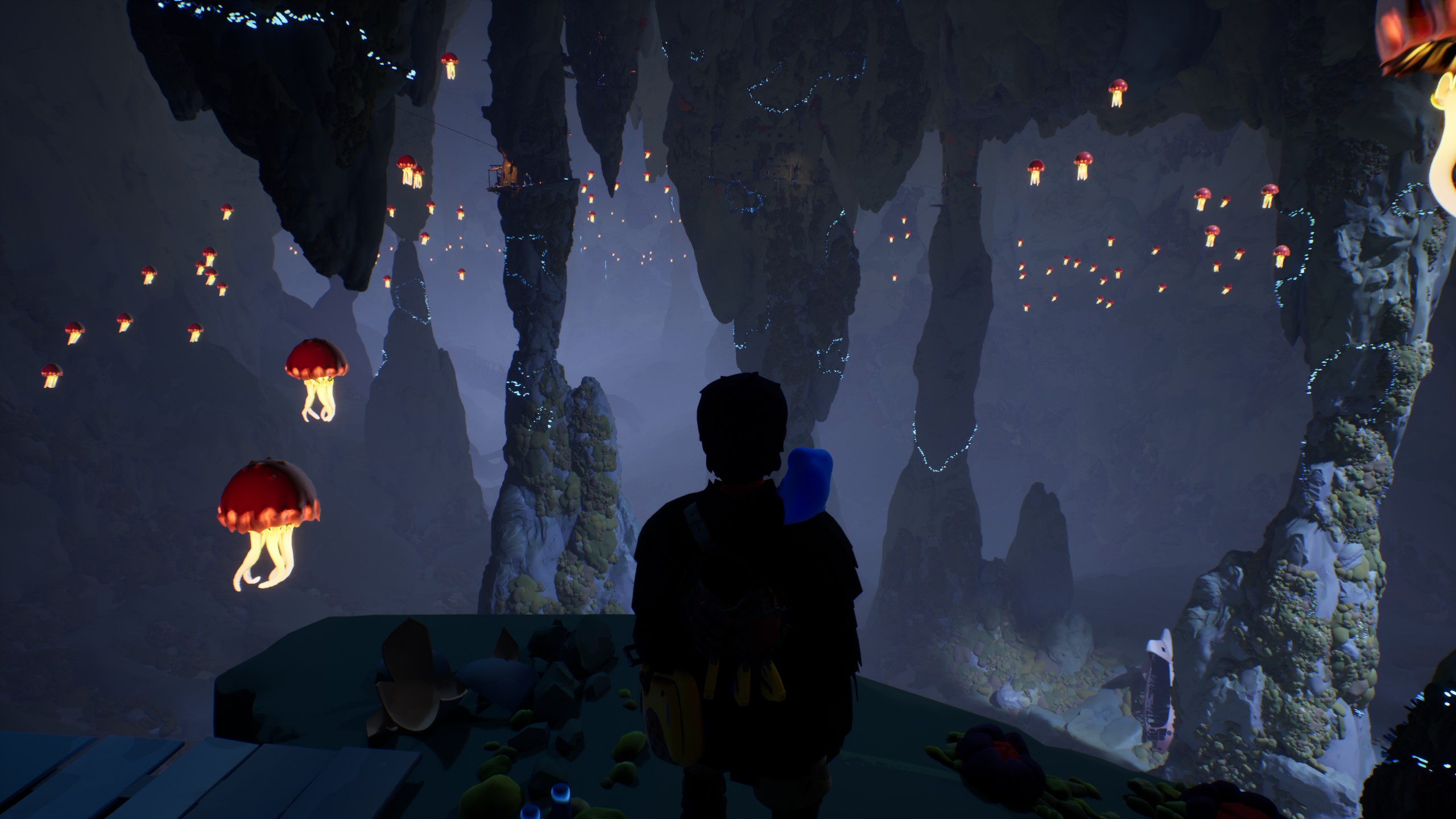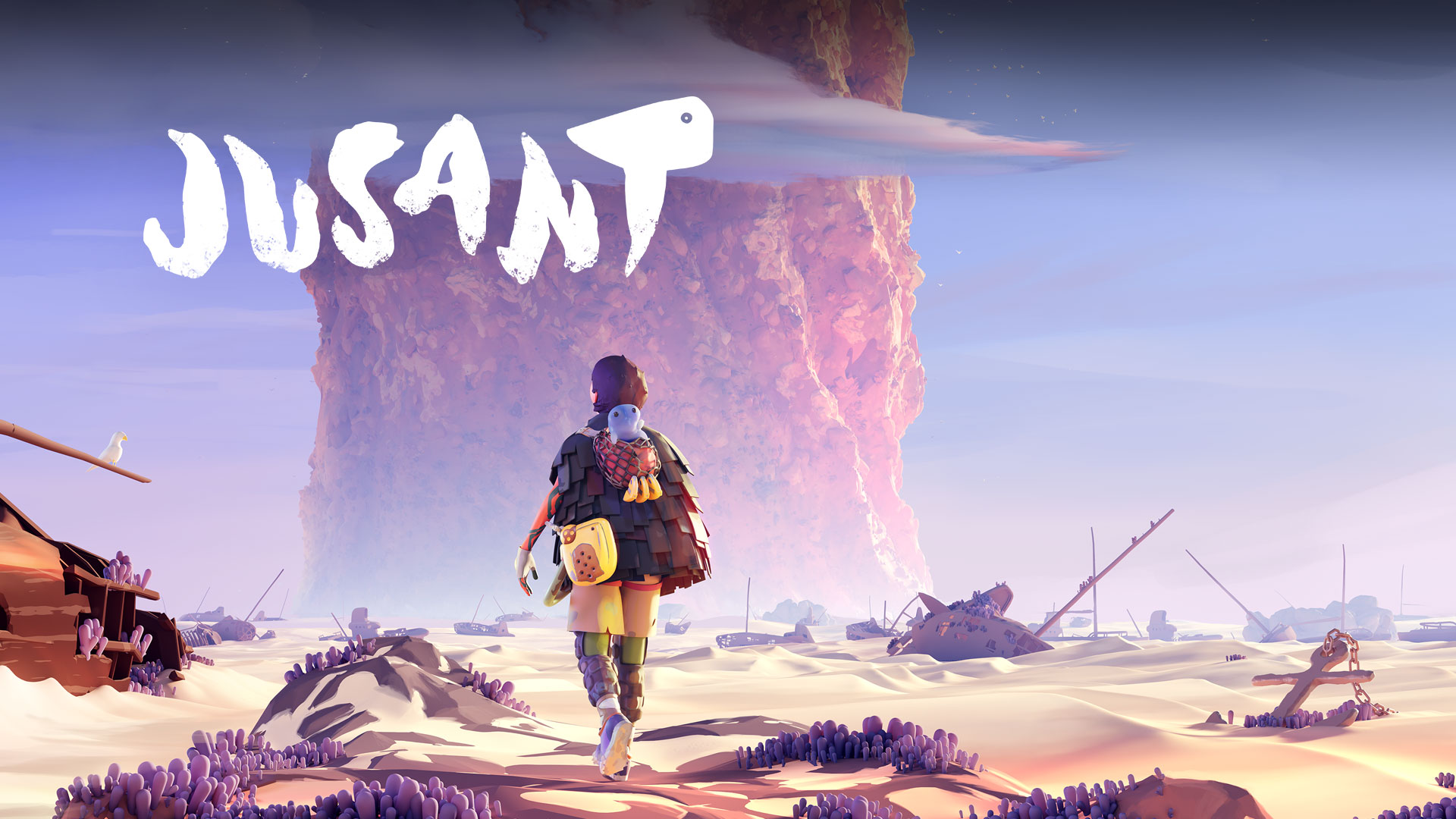In recent years, Don't Nod studio has been mostly known for series like Life is Strange, where players can immerse themselves into elaborate stories with thousands of lines of dialogue, in which decisions matter and relationships with other characters determine the outcome of the story. With Jusant however, the developers went in a seemingly completely opposite direction, a linear action-puzzle climbing game.
The game starts in the desert. You get the first look at the main protagonist and their destination – an enormous rock formation resembling a tower, with its peak out of view, high above the clouds. The main character remains silent throughout the whole adventure, but their goal is clearly to get to the top. And that will involve a lot of climbing. However, climbing is not the only thing to do in this game. You find yourself in a desert full of shipwrecks, controlling a character that you know nothing about and on your way up, you’re finding traces of previous inhabitants of this strange tower. Also, you have a cute blue animal/blob companion in your backpack that can bring flora around you to life (and yes, you can pet it!). The game does not force you to look for the answers, but if you’re interested, you can find mementos and letters along the way, that will gradually tell you the story of this world.
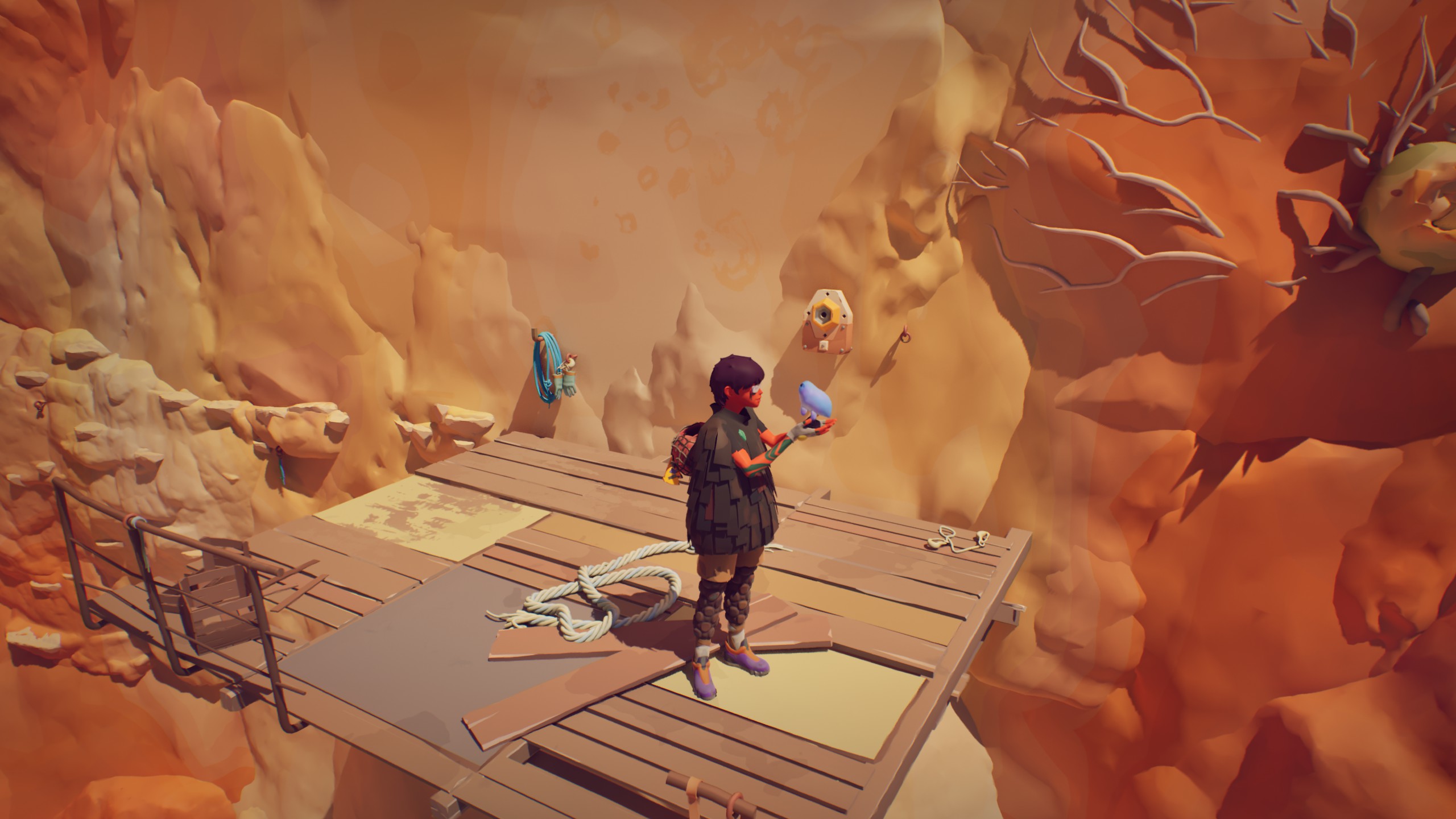
Even without picking up the collectibles, the game shines in environmental storytelling and right from the start I was pulled into the world of Jusant. The gorgeous graphics and awesome sound design with a relaxing and atmospheric soundtrack together create a very calming experience and you simply want to know what happened to this world, not just rush to the top. I often found myself just standing on the edge of a cliff, listening to peaceful music and looking at the beautiful surroundings. I never tried to meditate, but I think Jusant got me pretty close to that experience.
Gotta catch ‘em all
From the first look at the rock tower, the basic premise of Jusant is very clear. There are remains of boats and fishing equipment everywhere and even at significant height, the rocks are covered by corals and mussels, which show that there used to be plenty of water everywhere. So why are you now surrounded by a desert? To better understand the world and story of Jusant, you can find several types of collectibles. First are the seashells that play you the sounds of the area where you found them, but from an era long gone. The rock tower used to be full of life and where you now see only ruins, there used to be children playing and laughing, crops growing, water flowing… the shells allow you to hear all that while looking at the remains of the previous civilization.
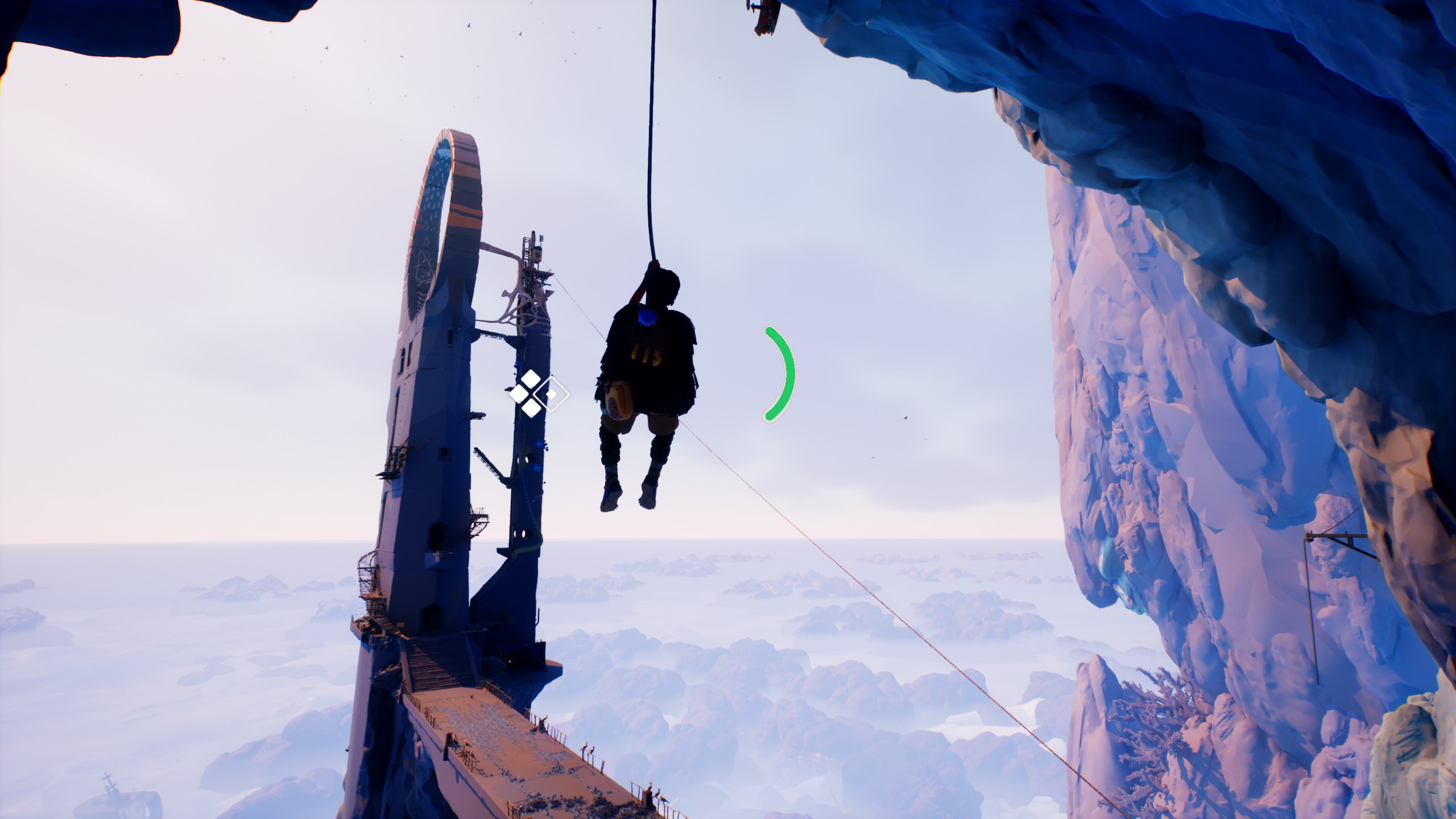
The main source of information are the letters. They show the daily life of people who lived there and as you slowly work your way up, they reveal the big tragedy of this area, how the water disappeared. You learn how society had to gradually change their way of living because of lowering supplies of water, how families got separated because some decided to brave the desert in search of more hospitable areas, and how one group of people decided to search for water on the top of the mountain, where you are also headed.
The frescoes you find deeper into the caverns show you history that even the authors of the letters have forgotten and hint at giant mythical creatures that are tied to water disappearance. You have to activate each fresco with the help of your blue companion and then it tells you a part of a story. Sadly this story is hidden in the gallery in the menu, which broke the immersion for me because I had to pause the game, go to the menu, find the fresco I just discovered, read the part of the story, and then go back. I would prefer if the text just appeared in-game near the fresco upon activation.
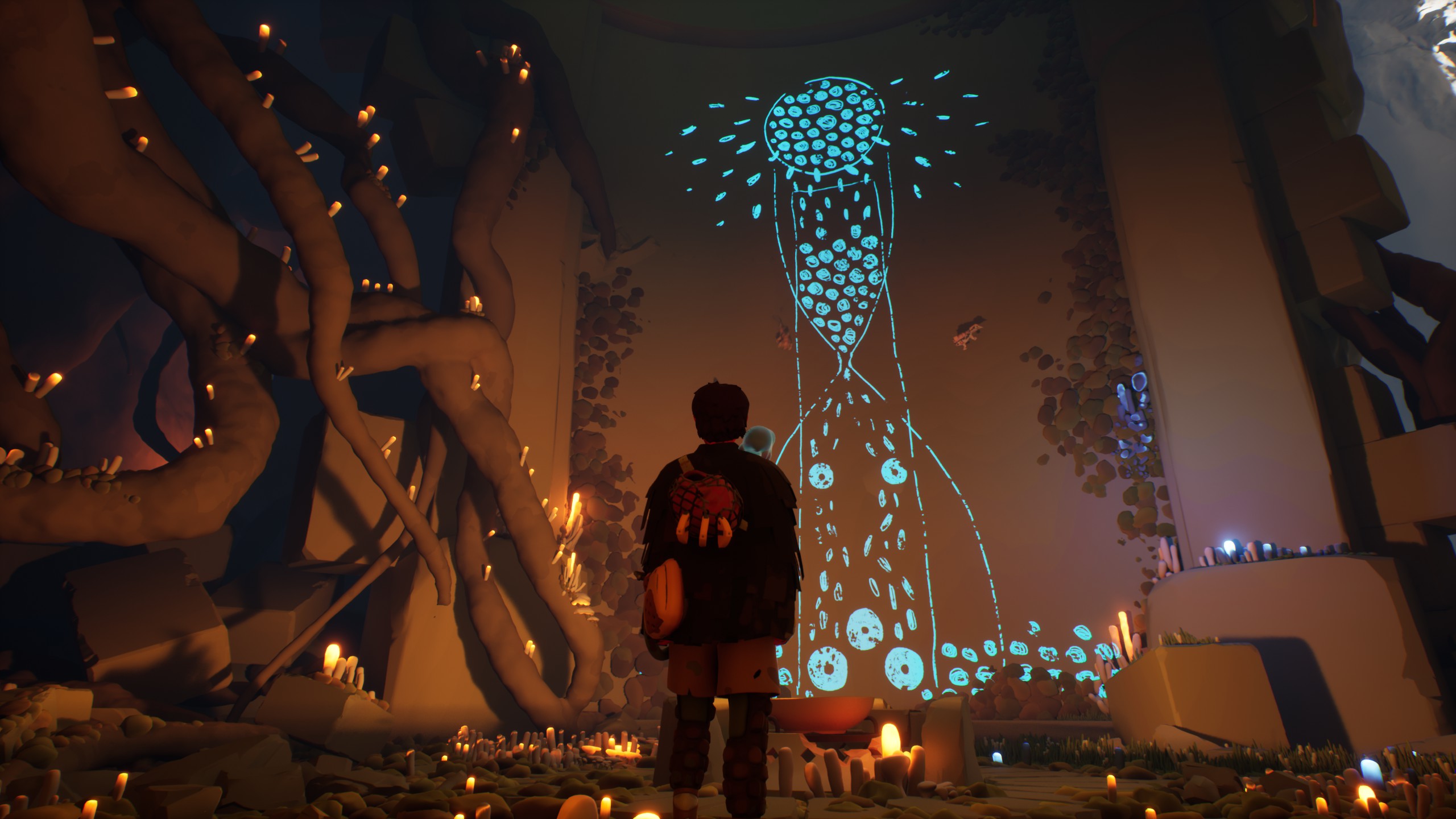
If you miss some of the collectibles on your first playthrough, the game lets you go back to each of the six chapters separately, showing you how many collectibles of each category you missed in the chapter, so you don’t have to replay the whole game again if you want to know the whole story.
Climbing simulator or walking simulator?
If you are looking for a climbing simulator, then Jusant is probably not for you. The climbing experience is rather casual, you only control your hands, and your feet sort of tag along. There is a stamina indicator, which especially in later chapters forces you to take some rest on longer climbs, but to get rest you just need to hold something with one hand, the character then shakes with the other hand to relax muscles and is ready to continue climbing. No need for secure attachment points, where you would be able to sit in your harness or anything like that. The game also does a lot to prevent you from falling. No going over the edge without a rope attached; at the start of a climb there are many points where the rope attaches itself and the game often reminds you to create additional secure points, so you don’t fall from such a great height if you mess up. You have three anchors that you can place on the wall as you climb and they allow you to swing across parts of the wall where there are no secure holds, or through the air. Every time you get to a safe spot on a plateau, you can reel your rope back, together with all three anchor points, with a single press of a button. It all feels a bit arcadey, but in this case, it’s absolutely right because you can enjoy the climb, swinging over the great chasms and scaling overhanging cliffs without the fear of falling. All the puzzles are environmental, based on getting from point A to point B and some of them are challenging, but after quickly testing the limits of the game at the start, I never felt tension or fear of losing my character. This approach may not suit more hardcore players, but it helps create the peaceful atmosphere that I enjoyed so much in Jusant.
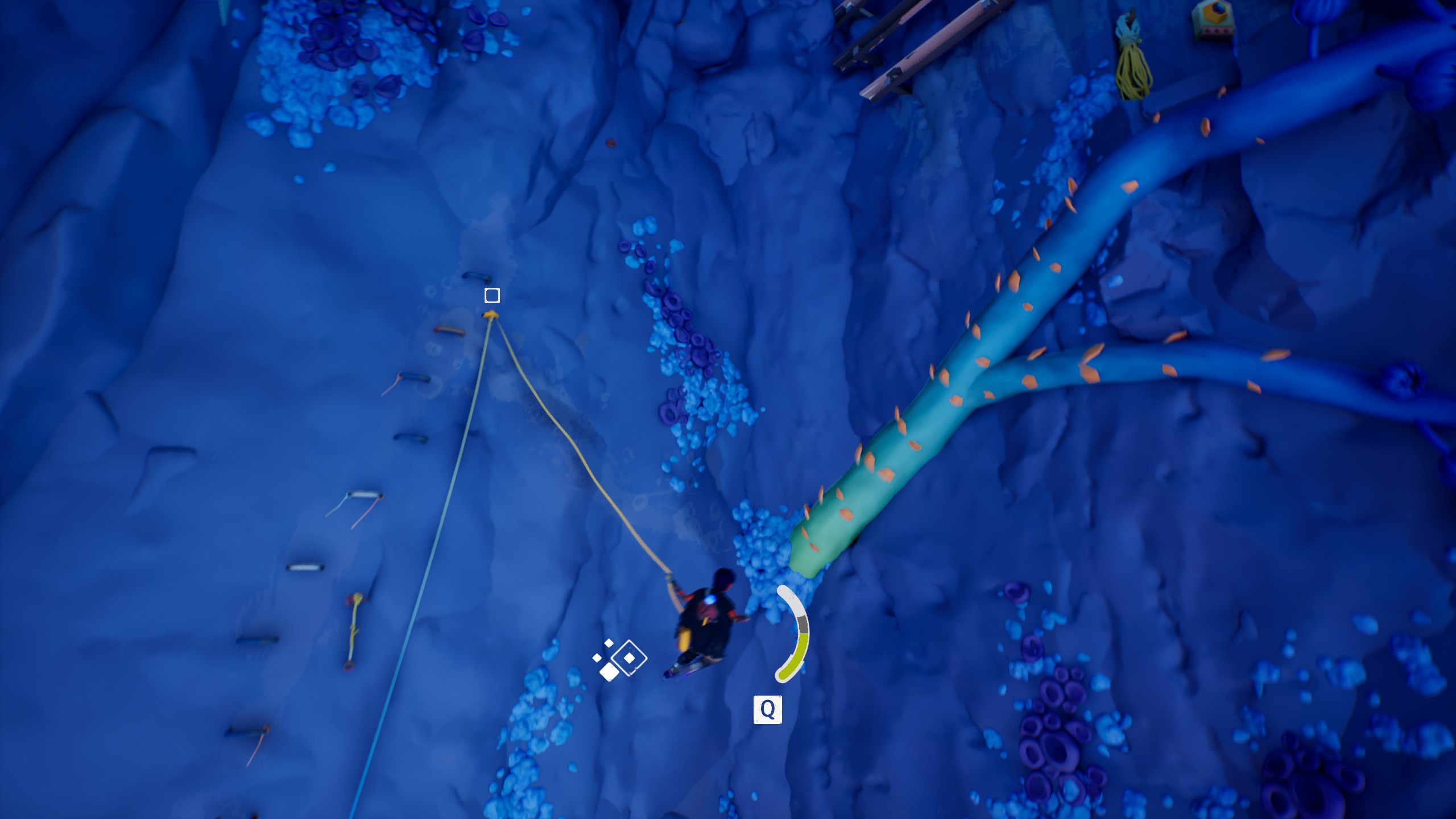
Finding the right way up is also not too difficult, sometimes there are more ways forward, or alternate paths that lead to collectibles, but with the knowledge that you always have to go up, you’re never lost for too long. Not all surfaces are climbable, which also limits your options, but being able to swing on your rope across pretty large areas helps you feel like you are not too restricted.
With every new chapter the environment changes and with it, new mechanics appear. The blue companion on your back can release an energy pulse that wakes up surrounding fauna and flora which helps you traverse certain areas. The change in mechanics is gradual, you never feel overwhelmed with sudden jumps in difficulty or bored with the same type of challenges. Just like with the story, the gameplay progress is timed perfectly.
Hang in there
The game comes with one of those “Best with a controller” notices. I’m a big fan of controllers in 2D games, top-down shooters, and platformers, everywhere where I don’t have to deal with the camera. But in the beautiful world of Jusant, there is plenty to look at so I went for a mouse and a keyboard, so I have more control over looking around.
Climbing mechanics are pretty intuitive, LMB represents your left hand, RMB represents your right hand. If you hold down the button, the character grabs and holds an attachment point, if you let go, the character also releases their grip. WASD is used to aim your character at the next point where they should climb, and R and F keys are for rappelling. So the controls for climbing itself are well executed but other interactions in the game are… let’s say strange. Picking up collectibles with Shift is something I had a lot of trouble getting used to and using Backspace to get out of the menu is also something you don’t see often in games. But the controls are rebindable and the game reminds you of the control scheme when necessary so that’s just a minor complaint. And the main “grab and hold” mechanic felt rather satisfying, much more engaging than climbing in many action games, where you just press arrows to let the character climb in a certain direction. Climbing animation feels fluid most of the time, so it’s nice to watch the character climb.
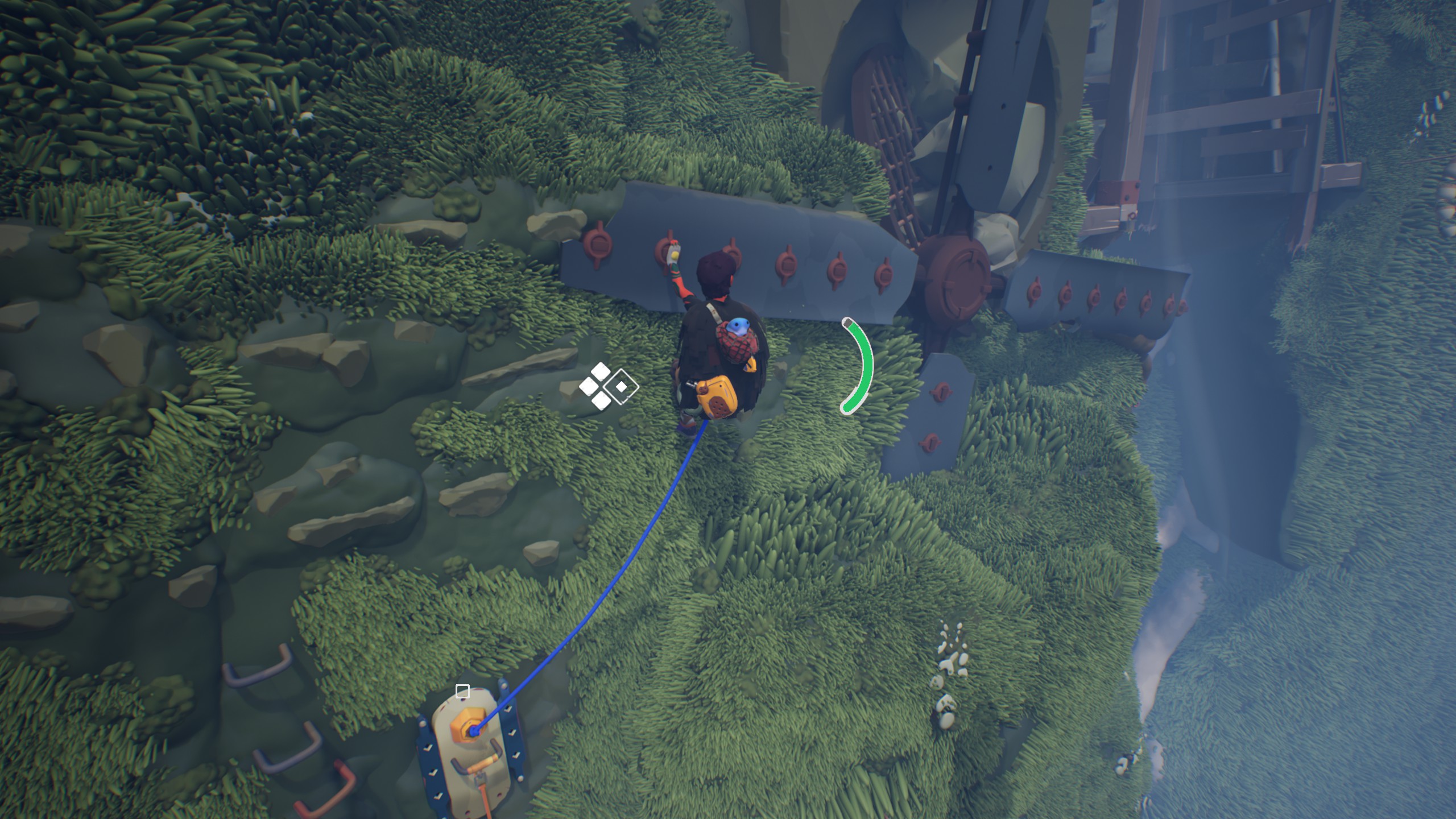
What I did not find so enjoyable, was horizontal exploration. Between each climb there are plateaus that you can walk on, they usually hide collectibles and they greatly contribute to visual storytelling. But it’s also pretty easy to get stuck in rubble on the ground, so I was often forced to hop around to get away. It mostly happened around corners or at the edges of the area where you go only if you are a bit snoopy, so it was not a deal breaker. But for a game that promotes exploration to find collectibles, it was definitely not a pleasant experience and hopefully devs will go back to the game and fix this.
In total, the game takes about five hours to finish, a bit more if you are looking for all the collectibles. Some might consider that short, but I spent one very enjoyable Sunday afternoon with the game and I would not want it to be any longer. The pacing is just perfect, the climbing and storytelling portions are ideally balanced and apart from some minor technical hiccups, the game is extremely enjoyable. The story is at many points open to interpretation, touching many topics that are not always very cheerful, but the breathtaking visuals and peaceful, high-quality soundtrack keep the atmosphere light and meditative. Together these elements create a piece of art that I can only recommend. Jusant proves that you can have a compelling story even without a single word spoken.
